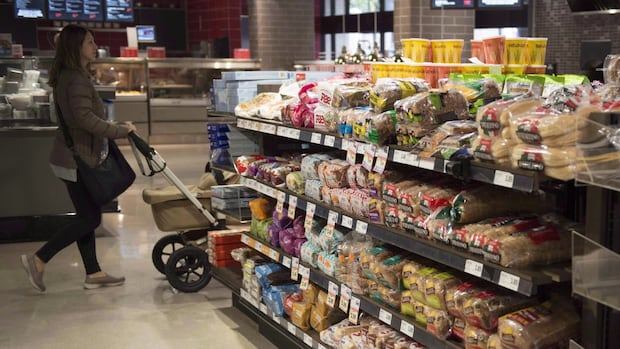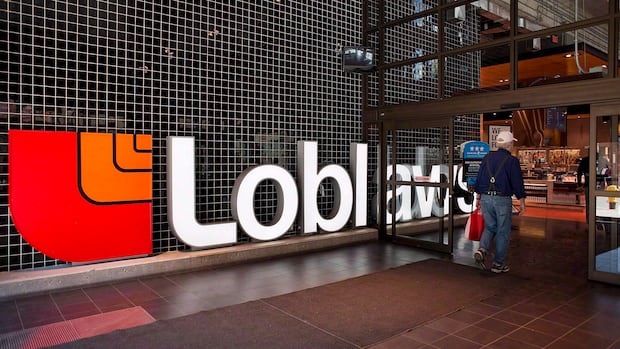Have you bought bread in the past 20 years? Then you’re probably included in what’s being called the “largest settlement of a price-fixing case in Canadian history.”
A $500-million settlement in the long-running Loblaw bread-fixing case was approved by Ontario Superior Court Judge Ed Morgan on May 7, saying the money put forward by the grocery companies was “an excellent and fair result for all concerned.”
The class-action lawsuit accused Loblaw Companies Limited and its parent company, George Weston, of engaging in an industry-wide scheme to fix the price of bread. The plaintiffs alleged companies participated in a 14-year industry-wide price-fixing conspiracy between 2001 and 2015, leading to an artificial increase in packaged bread prices.
Jay Strosberg, a lawyer representing plaintiffs in the class-action lawsuit, told CBC’s Hanomansing Tonight Monday that the sheer size of the settlement is significant, as well of the scope in terms of how many people were affected.
“We’re talking about almost everyone in the country who is probably impacted by this conspiracy,” Strosberg said.
Jay Strosberg, a lawyer representing plaintiffs in the class-action lawsuit accusing Loblaw of engaging in a bread-fixing scheme, reacts to the approval of the $500-million settlement.
How do I know if I’m eligible?
There are two settlement classes: one in Ontario, for all of Canada outside Quebec, and one in Quebec for Quebec residents only.
To be eligible in this current settlement, you must be a Canadian resident outside of Quebec who purchased packaged bread between Jan. 1, 2001, and Dec. 31, 2021, that was produced or distributed by a defendant (Loblaw and its parent company), according to the official bread settlement website.
To be eligible for the Quebec class action you must be a resident in Quebec who purchased at least one package of bread between Jan. 1, 2001, and Dec. 31, 2021.
The Ontario settlement was approved May 7. A Quebec court will hear arguments around whether to accept the Loblaw and George Weston settlement on June 16.
While the price-fixing allegations targeted other major grocers, including Sobeys, Walmart, Giant Tiger and Metro, only Loblaw and its parent company have agreed to a settlement. The others have denied the allegations.
Canada Bread, which is also named as a defendant, was fined $50 million in June 2023 after pleading guilty to four counts of price-fixing bread products under the Competition Act.
But that fine went to the government, not to consumers.
Canada Bread must pay a $50 million fine for being part of a scheme to fix the price of bread in Canada over 14 years. It’s the highest fine the Competition Bureau has ever levied. Andrew Chang explains how the scheme worked, and why this may only be the beginning.
Do I have to do anything?
If you bought bread in the last 20 years, you’re automatically included in the settlement classes. The date to opt out of the Ontario settlement has already passed. If you wish to opt out of the Quebec settlement, you have until May 30.
But you’ll eventually have to register on one of the Canadian bread settlement websites to make an official claim, Strosberg explained (which you can only do once the settlements have been approved).
As of Tuesday, the Ontario website notes the claims process is still being determined.
Do I need my receipts? For 20 years of bread?
The May 7 settlement documents don’t mention receipts anywhere under the section on the rules of consumer distribution of the funds.
The documents note consumers over the age of 18 will have to submit a claim and provide “information and/or documentation as may be required.”
In previous interviews, lawyers for the plaintiffs have explained that people can’t be expected to hold onto receipts for so long and therefore won’t need to provide that kind of proof. Previously, Strosberg has said he expects consumers will need to fill in a one-page form to declare they bought packaged bread.
On Monday, Strosberg agreed with host Ian Hanomansing saying, “Obviously, I won’t need receipts,” by answering, “Correct.”

What’s in the settlement?
The approved settlement includes a combined $404 million to be paid by Loblaw and George Weston. The remaining $96 million is accounted for through a gift card program Loblaw began in 2018 and ran through 2019 in hopes of making amends with customers who paid about $1.50 more per loaf of bread.
Once legal fees and other court expenses are paid, 78 per cent of the funds will be allocated to shoppers in the Ontario settlement with the remaining amount headed for people in Quebec.
What could I get?
It depends how many people come forward and how many claims are approved, explains Strosberg.
“If one million people come forward, they’re going to get more. But if 25 million people come forward, they might get less,” he said.
Customers who bought bread between January 2001 and December 2021 and did not previously take a gift card from Loblaw will eventually receive up to $25, according to The Canadian Press.
If there is still money left over after that distribution, funds will be divided among anyone who claimed the gift card.

Sorry, what about the gift cards?
Loblaw started offering $25 gift cards in 2018 after admitting its role in the bread price-fixing scandal. At the time, Loblaw had stated that it expected to subtract $25 from any potential settlement payments to class action members who also got a gift card.
And it appears that’s how it’s playing out. According to the class action website, the $25 benefit previously claimed by some individuals under the Loblaw Card Program will be deducted from any compensation payable to them under the settlement.
What’s the next step?
Now that the Ontario class action has been approved, you can register for more information on next steps on the Ontario settlement website.
You can register to stay updated on the Quebec settlement on the class counsel’s website (scroll to the bottom). If the settlement is approved on June 16, the class counsel will email anyone who registered with instructions on how to register. It, too, will be done on the Quebec bread class-action website.
Once people are registered by the deadline (not yet determined), and we learn how many people apply, people will learn how much they might get, Strosberg said.


